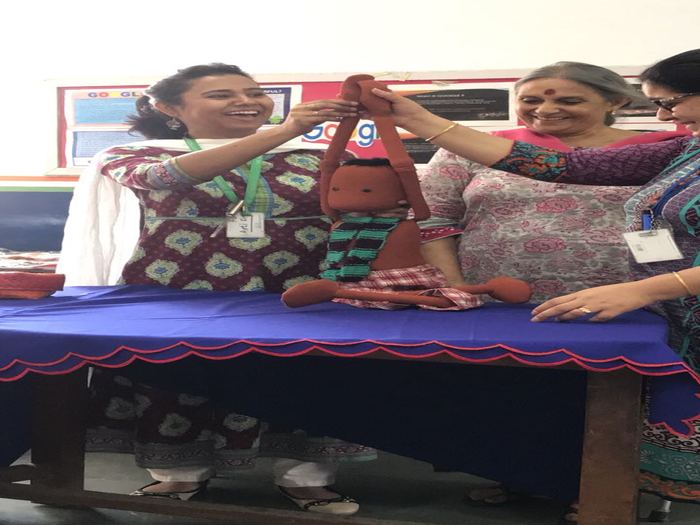Teacher workshop on Puppetry
The puppet is an emotion
A direct feeling, a metaphor
An image that communicates
The puppet moves us
We dont move it.....
Martha Graham
.
On 29 June, a puppetry workshop was organised for teachers of the pre-school and the pre-primary of both the schools The Indian School and The Foundation School. The workshop was conducted in the computer lab. The resource person was Ms. Ranjana Pandey.
who has trained in the area of puppetry in Belgium and is one of the pioneers in the Indian subcontinent to explore puppetry as a therapy.
The purpose of a puppetry workshop was to reiterate the importance of puppetry in classroom education. Since story- telling is an everyday activity for the younger children, puppets are an attractive tool for learning as they entreat the assimilation of language and listening skills, improve critical thinking and lengthen the attention span.
[gallery link="file" order="DESC"]
The workshop commenced with an interactive session by Ms. Pandey. Here, the teachers were quizzed about their areas of concern as faced with children. The resource person then demonstrated how each of these could be addressed with her tool.
The audience was told about the practise of puppetry in Orissa, Tamil Nadu, Assam, Bangalore, West Bengal, Andhra Pradesh, Karnataka, Rajashtan. She spoke about Glove Puppetry in Benia Putul-West Bengal and Orissa, String Puppetry in Sakhi Kundher-Assam, Rod Puppetry or Putul Nach in West Bengalin and the Bunraku puppet, famous in Japan.
She added that it is important to keep in mind that, regardless of what your puppet is made of, it is a character brought to life by a puppeteer .
An activity was carried out for the participants All the participants were asked to sit in pairs. and each pair was given a situation to enact using any kind of puppets. The audience were to guess the situations being conveyed through the enactment. The exercise was learning in entertainment! The role play was thoroughly enjoyed by all the participants.
Ms. Pandey showed us how sounds alone prompt the imagination. She had carried with her a variety of small instruments. Each pair was given one instrument and was told to close the
eyes. After a round of listening to the distinctive sounds produced by each instrument, the teachers were told to weave a story based on the different sounds just heard. The teachers quickly got to work and the stories that emerged were all very different and unique- demonstrating that children who are shy and hesitant will also come up with stories of their own and will in turn help others with language development.
The workshop was very realistic and easy to adapt in the classroom. It is both a powerful tool for narration during classroom teaching, as well as therapeutic for drawing out shy children. In many ways it is a learning down the emotional route which is long lasting.













